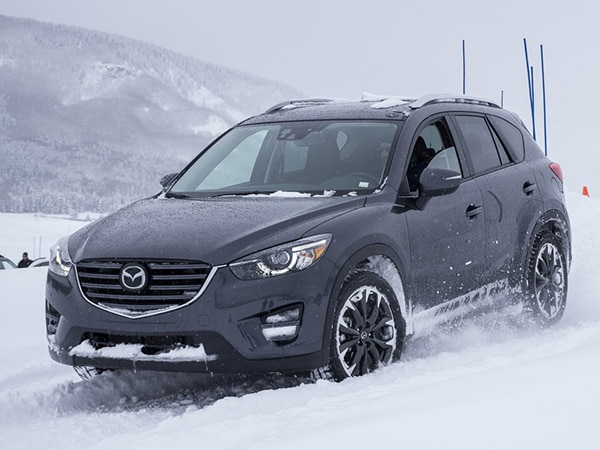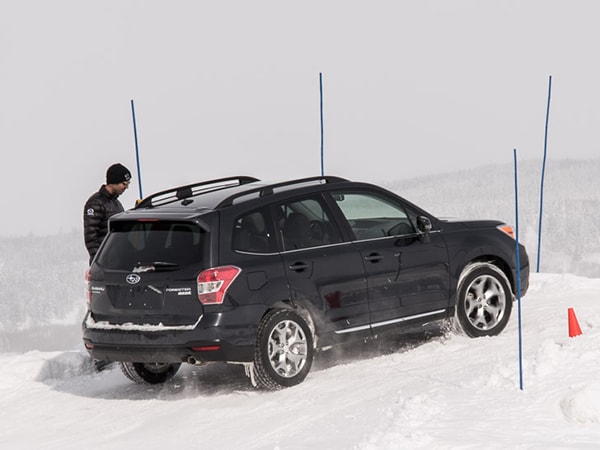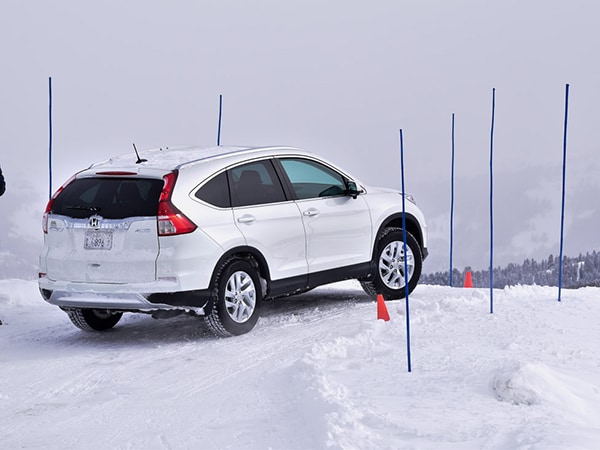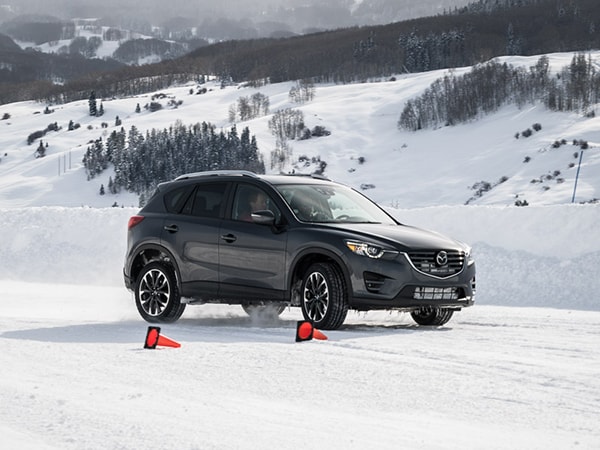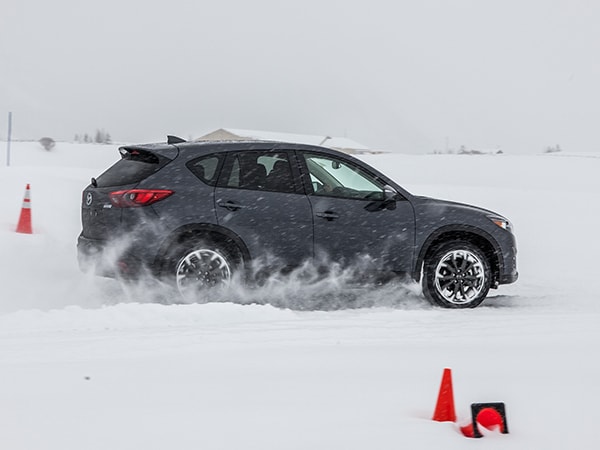Driving a 2016 Mazda Miata on ice, under controlled conditions where you won’t bump into anybody or anything, is just one continuous stream of giggles. If you have the chance, we highly recommend it.
However, risking frostbite driving a convertible in the snow wasn’t the reason Mazda flew journalists to the ski resort town of Crested Butte, Colorado. Instead, it was to showcase its all-wheel drive system, i-Activ. Mazda doesn’t stake its reputation on all-wheel drive as some other companies do, but its fleet is filled with AWD crossover SUVs. And — surprise! — Mazda thinks it has the best.
For any technology demonstration like this, there’s an important caveat: Manufacturers design these tests to showcase its vehicle’s advantages over competitors. So it comes as no surprise that the Mazda products outperformed the other vehicles in the tests. Some might call it cheating, but it raises the question as to why one manufacturer’s vehicle can perform a task and the others can’t.
The Competition
There’s good reason to think Mazda’s not just blowing smoke about its AWD system’s advantages, and it boils down to anticipating traction needs instead of reacting to them. On-demand all-wheel drive systems in vehicles like the Mazda CX-5 and its competitors spend most of the time powering the front wheels, and engage the rear wheels only when there’s a loss of traction. Most systems are reactive; the front tires slip, and the rear wheels engage.
The Mazda i-Activ system’s primary difference is that it uses various sensors to anticipate low-traction situations, and engage all-wheel drive proactively. By combining outside temperature (cold=possible ice), wiper position (if they’re on there’s precipitation, and it’s likely slippery), steering effort vs. angle (less effort for more angle means the road is slick), and 24 other sensors, it guesses when road conditions aren’t favorable, and engages all-wheel mode before the wheels can slip. The idea is that this gives the Mazda system an advantage by ensuring all-wheel traction is already available when needed.
To demonstrate how its system compares to others, Mazda set up two demonstrations with its 2016 Mazda CX-5, alongside a Subaru Forester (because of the company’s all-wheel drive reputation) and an all-wheel drive Honda CR-V (because Honda sells so darn many). All vehicles were equipped with the same type of Bridgestone Blizzaks, eliminating the tires as a variable.
Giant Slalom
The first part of the course was a simple slalom, followed by a long right-hand turn. In the slalom, the Honda CR-V turned in an adequate, but jerky performance. The front and rear wheels seemed to fight for engine torque, rather than share it, and the result was a vehicle that was hampered significantly by its stability control. On the steady state right-hand sweeper the CR-V was better, but prone to letting the front wheels slide wide. The Subaru Forester and Mazda CX-5 displayed more poise than the Honda in both tests, but in different ways. In both tests, the Subaru’s stability control was constantly chattering to prevent any waywardness. By contrast, the Mazda’s stability control was much less active in the CX-5, but it was more controllable than the Subaru. The perception was that the Subaru was relying more on its stability control to retroactively correct the vehicle’s slide, while the Mazda’s all-wheel drive system was better able at controlling the CX-5 on its own.
Mogul Challenge
The second part of the course was designed to showcase the predictive nature of the system. The same three vehicles had to climb a snow hill, stop at the top with the wheels turned to the right, and then proceed to finish climbing the hill and descend. It sounds simple, and if these were full-time all-wheel drive systems with a center differential, it would be. But all three vehicles use an on-demand all-wheel drive system without a center differential. If a part-time all-wheel drive system locks into four-wheel drive under these conditions on dry pavement, the fact it can’t let the front and rear wheels rotate at different speeds means the whole drivetrain could bind up. That, as you can imagine, is bad.
On the slope, both the CR-V and the Forester easily climbed the slope, but had trouble getting moving again until the steering wheel was pointed straight ahead. The Mazda CX-5 was able to pull away without straightening the steering wheel, and Mazda credits its predictive algorithms. Because it knew the conditions — a cold, slippery surface, on a slope, how much torque to the rear it took to get there — it knew it could leave the all-wheel drive system engaged without binding, since the tires would simply slip a bit on the snow and binding wouldn’t be a problem. The Subaru and Honda systems struggled when the wheel was turned, likely because their systems lack those inputs and must assume dry pavement to prevent binding, and thus don’t fully engage their all-wheel drive system from a dead stop with the front wheels turned.
Cross Country
Later in the day — after playing with the Miatas — we drove the Mazdas on the snowy roads around a Crested Butte residential neighborhood, along with a Honda HR-V, Nissan Rogue, Subaru Forester, and Toyota RAV4. And…they were all fine, really. The roads were definitely snowy, and traction was low, even with the Bridgestone Blizzak winter tires fitted to each vehicle. But no vehicle showed a really clear advantage over the others, regardless of make.
We’re guessing that probably wasn’t the result Mazda was hoping for, but it illustrates a larger point. Any all-wheel drive system is going to give you a significant advantage in low-traction conditions, be it rain, snow, ice, or a little bit of mud and gravel. Without question, Mazda’s system shined in its controlled tests, and that’s not a backhanded compliment, since they were decent simulations of real-world conditions. But the reality is that if you live in an area where low-traction is the norm — or at least a realistic possibility — then all-wheel drive is a must-have.
